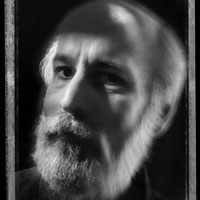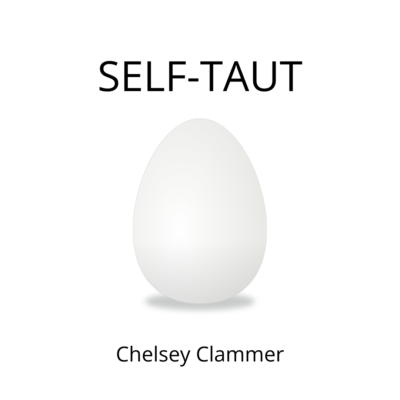Stephen Perloff
THE TIMES, THEY WERE A-CHANGIN’ – West Philly Days: A Photo Essay
[slideshow_deploy id=’12401′]
When I arrived at the University of Pennsylvania as a freshman in 1966, men were required to wear jackets and neckties to dinner—and most of us wore jackets and ties to football games. The men’s dorms in The Quad were several blocks from the women’s dorms at Hill House, and you couldn’t have a woman in your room past 10 p.m., and maybe a little later on the weekend.
But there were confounding juxtapositions and experiences. Who was that strange guy with the huge head of curly hair and the button that said “Frodo Lives”? What did that mean? (Most people now don’t know that The Lord of the Rings trilogy started to become a popular phenomenon in the U. S. in the mid-1960s.)
And then there was the war in Vietnam. Back home it was hardly a topic of conversation—and, even if it were, who wouldn’t want us to fight the evil Communists? They might as well have been alien invaders as depicted in many sci-fi movies at the time. Who knew that Ho Chi Minh had once been staunchly pro-American and that the U. S. government had subverted the free and fair elections we promised the Vietnamese? Well, a lot of us soon did. Plus, far too many young American soldiers were being killed. And that could one day be us unless we resisted or went to Canada.
While the civil rights struggle had made some progress—the Voting Rights Act had just been passed in 1965—it was far from over. There had been few blacks where I grew up in Kingston, Pennsylvania, a suburb of Wilkes Barre, but as a Jew who as a child had witnessed pogroms in Russia, my father instilled in us a tolerance toward all people, especially those struggling for their own rights and for equality for themselves.
Coming to Philadelphia and Penn, I interacted with African Americans on all levels, from workers to professionals, from neighbors to students I taught as a substitute teacher in junior high and elementary schools in West Philadelphia in the fall of 1970. It seemed natural to bring a camera to school and make portraits during recess. The students were proud to pose. (But I can’t imagine it would be allowed today.) At the time, in the spirit of the era, we all seemed to be just people, with a common bond being that we all believed in fighting oppression. And there was still plenty of that in Frank Rizzo’s Philadelphia.
When I first came to Penn, there were no photography classes. A year or two later I saw a sign for a photographer advertising a private class at his apartment in nearby Powelton Village where he would teach developing and printing. I signed up and took my first class with Michael A. Smith. Later, when I was in graduate school at Penn, I took Michael’s advanced critique class that met at his farm in Stockton, New Jersey. That was all the formal training I had.
[slideshow_deploy id=’12424′]
As with many young photographers starting out, my vision was a bit scattershot. As my vision matured I tended to look for longer-term projects and most of those “in between” images were never printed. But as many somewhat older photographers do, I have been reconsidering my archive and have discovered that many of these early images do tell a story, particularly in the ’60s and ’70s as the civil rights movement, the women’s movement, the sexual revolution, and especially the antiwar movement, radically changed American society—and as photography was beginning to be considered more widely as a fine art.
By the fall of 1967 jackets and ties were out, jeans and T-shirts were in. We still went to the football games at Penn but you were more likely to smell marijuana in the stands than to see someone with a flask. Men burned their draft cards and women burned their bras—well, some did. We sat in at College Hall and marched a million strong on Washington to protest the war in Vietnam.
These images made in West Philadelphia capture a bit of what life was like at Penn in those years and portray some of the extraordinary people, young and old, in what has been since that time a diverse and racially integrated neighborhood. While not without its problems, West Philadelphia most often shows the best of how we can live together.
 Stephen Perloff is a photographer, curator, and the founder and editor of The Photo Review, a critical journal of international scope publishing since 1976. He is also the editor of The Photograph Collector, the leading source of information on the photography art market. Perloff has taught photography and the history of photography at numerous Philadelphia-area colleges and universities and his photographs are in numerous public and private collections. He received the Colin Ford Award for Curatorship from the Royal Photographic Society in 2012. You can view more photos at Stephen Perloff’s website, www.perloffphoto.com.
Stephen Perloff is a photographer, curator, and the founder and editor of The Photo Review, a critical journal of international scope publishing since 1976. He is also the editor of The Photograph Collector, the leading source of information on the photography art market. Perloff has taught photography and the history of photography at numerous Philadelphia-area colleges and universities and his photographs are in numerous public and private collections. He received the Colin Ford Award for Curatorship from the Royal Photographic Society in 2012. You can view more photos at Stephen Perloff’s website, www.perloffphoto.com.
Author photo: Judith Harold-Steinhauser
The Photographs:
Horizontal:
1. The Quad at Night, Snowfall, University of Pennsylvania Dorms, Philadelphia, winter 1967, archival pigment print, 12″ x 18″
2. Charles Frank, the Doggie Man, at Work at the Palestra, Philadelphia, January 1970, archival pigment print, 12″ x 18″
3. Jim Wolf Jumps Center against Julius Irving and the University of Massachusetts, January 17, 1970, at the Palestra. (Penn won 75-65. Penn players Bob Morse, Dave Wohl, and Corky Calhoun, left to right), archival pigment print, 12″ x 18″
4. Schoolboy, Philadelphia, fall 1970, archival pigment print, 12″ x 18″
5. 5000 Block Baltimore Avenue, Philadelphia, spring 1971, archival pigment print, 12″ x 18″
6. Young Boy, Philadelphia, spring 1971, archival pigment print, 12″ x 18″
7. Four Plus One, Philadelphia, spring 1971, archival pigment print, 12″ x 18″
8. Tailor, Philadelphia, spring 1971, archival pigment print, 12″ x 18″
9. Peachy, Who Sold Newspapers from His Wooden Kiosk, 36th and Market Streets, Philadelphia, October 1973, archival pigment print, 12″ x 18″
10. Penn Football Team during Warmup, Franklin Field, Philadelphia, November 1973
11. The Gaze, Philadelphia, November 1973, archival pigment print, 12″ x 18″
12. Class of 1900, Penn Alumni Day, Philadelphia, May 17, 1985, archival pigment print, 12″ x 18″
Vertical:
1. Anti-War Teach-in, the Palestra, University of Pennsylvania, Philadelphia, October 1969, archival pigment print, 18″ x 12″
2. Two Schoolgirls, Philadelphia, 1970, 18″ x 12″
3. C, Philadelphia, November 1973, 18″ x 12″
4. Louis Kahn, Philadelphia, February 1974, 18″ x 12″
5. Red Cap, 30th Street Station, Philadelphia, November 24, 1975, 18″ x 12″
6. Glen Torraine Family, our next door neighbors in Powelton Village, on their way to the Easter Parade, Philadelphia, April 18, 1976, 18″ x 12″
Stephen Perloff’s exhibit “West Philly Days” is on view at The Gold Standard Café, 4800 Baltimore Avenue, Philadelphia, September 8–October 29, 2014.
All works © Stephen Perloff
Read more from Cleaver Magazine’s Issue #7.



